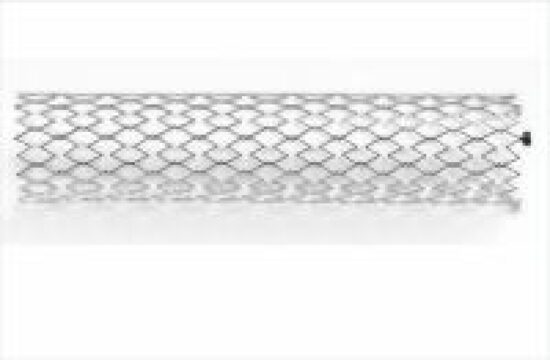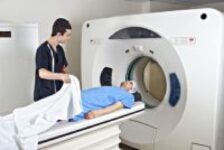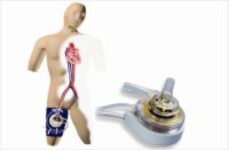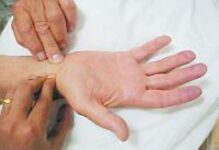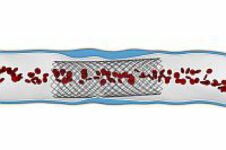Original title: Self-Expanding Versus Balloon-Expandable Stents in Acute Myocardial Infarction: Results From the APPOSITION II Study Reference: Robert-Jan van Geuns et al. J Am Coll Cardiol Intv 2012;5:1209–19 Acute myocardial infarction is associated with vasoconstriction and thrombus occlusion. Resolution of these two points during the first hours after primary angioplasty can lead to poor extension and poor positioning…
Revascularization reduces mortality in patients with high risk coronary artery disease based on multi-slice CT
Original title: All-cause mortality benefit of coronary revascularization vs. medical therapy in patients without known coronary artery disease undergoing coronary computed tomographic angiography: results from CONFIRM (Coronary CT Angiography EvaluatioN For Clinical Outcomes: An InteRnational Multicenter Registry) Reference: James K Min et al. European Heart Journal (2012) 33, 3088–3097 doi:10.1093/eurheartj/ehs315. Several large studies have shown revascularization reduces mortality…
More evidence supports ventricular assist devices in complex angioplasty procedures
Original title: Percutaneous Left Ventricular Assist Device with Tandem Heart for High-Risk Percutaneous Coronary Intervention: The Mayo Clinic Experience. Reference: Oluseun O Alli, et al. Catheterization and Cardiovascular Intervention 80:728:734 There is a small group of poor surgical patients admitted for surgery that due to complex comorbidity, coronary anatomy and compromised left ventricular function that can be treated…
Radial Approach, 1st choice in Acute Coronary Syndromes
Original title: Radial Versus Femoral Randomized Investigation in ST-Segment Elevation Acute Coronary síndrome. The RIFLE-STEACS (Radial Versus Femoral Randomized Investigation in ST-Elevation Acute Coronary Syndrome) Study. Reference: Enrico Romagnoli et al. J Am Coll Cardiol 2012;60:2481–9. Bleeding in patients with acute coronary syndromes (ACS) is an independent predictor of morbidity and mortality. Until today, evidence supporting the radial…
Strategies for treating left coronary trunk restenosis.
Original title: Clinical and Procedural Predictors of Suboptimal Outcome After the Treatment of Drug-Eluting Stent Restenosis in the Unprotected Distal Left Main Stem The Milan and New-Tokyo (MITO) Registry. Reference: Circ Cardiovasc Interv. 2012;5: 491-498 We have very little data on the percutaneous treatment of restenosis of an unprotected LMCA. The aim of this study was to evaluate…
Future strategies to prevent restenosis and stent thrombosis
Original title: Endothelial cell repopulation after stenting determines in-stent neointima formation: effects of bare-metal vs. drug-eluting stents and genetic endothelial cell modification. Reference: Douglas G et al. European Heart Journal doi:10.1093/eurheartj/ehs240 Experimental models of vascular injury have shown that the rate of endothelial cell repopulation post-injury is a critical factor in determining subsequent neointima formation as well as…
Complex angioplasty with ventricular assist
Original title: Real-Word of the Impella 2.5 Circulatory Support System in Complex High-Risk Percutaneous Coronary Intervention: The USpella Registry Reference: Brijeshwar maini, et al. Catheterization and Cardiovscular Intervention For about a decade angioplasty has begun to be performed in increasingly complex patients (PE) such as those with left coronary trunk injury, 3-vessel injury, poor ventricular function and surgically…
High-dose atorvastatin for prevention of contrast nephropathy
Original title: Impact of a High Loading Dose of Atorvastatin on Contrast-Induced Acute Kidney Injury. Reference: Quintavalle et al. CIRCULATIONAHA.112.10331, 2012 Patients included in this study represent a subgroup with chronic renal failure (CRF) enrolled in the NAPLES II trial who were randomized to atorvastatin 80 mg 24 hours before angioplasty, (n = 202) versus the control group…
Risk score of thrombosis in patients with acute coronary syndrome
Original title: Development and Validation of a Stent Thrombosis Risk Score in Patients With Acute Coronary Syndromes. Reference: George D. Dangas et al. J Am Coll Cardiol Intv 2012;5:1097–105. The implantation of a stent in a pro thrombotic condition such as acute coronary syndrome (ACS) is associated with a higher incidence of stent thrombosis. There is no data…
Is a counter-pulsation balloon useful in myocardial infarction?
Original title: Intraaortic Balloon Support for Myocardial Infarction with Cardiogenic Shock (for the IABP-Shock II Trial Investigator) Reference: Holger T, et al. NEJM 367;14:1287 The rate of mortality in cardiogenic shock secondary to acute myocardial infarction (AMI) is high even in patients receiving early revascularization. The use of an intra-aortic balloon counter-pulsation pump (IABP) according to the…
Risk scores in patients with acute coronary syndromes
Original title: Walking Beyond the GRACE (Global Registry of Acute Coronary Events) Model in the Death Risk Stratification During Hospitalization in Patients With Acute Coronary Syndrome. Reference: Rapouseiras-Roubín S, et al. J Am Coll Cardiol Intv 2012;5:1117–25. Discriminatory power of risk score predictors become fundamental in the management of patients with acute coronary syndromes. This tool lets you…
